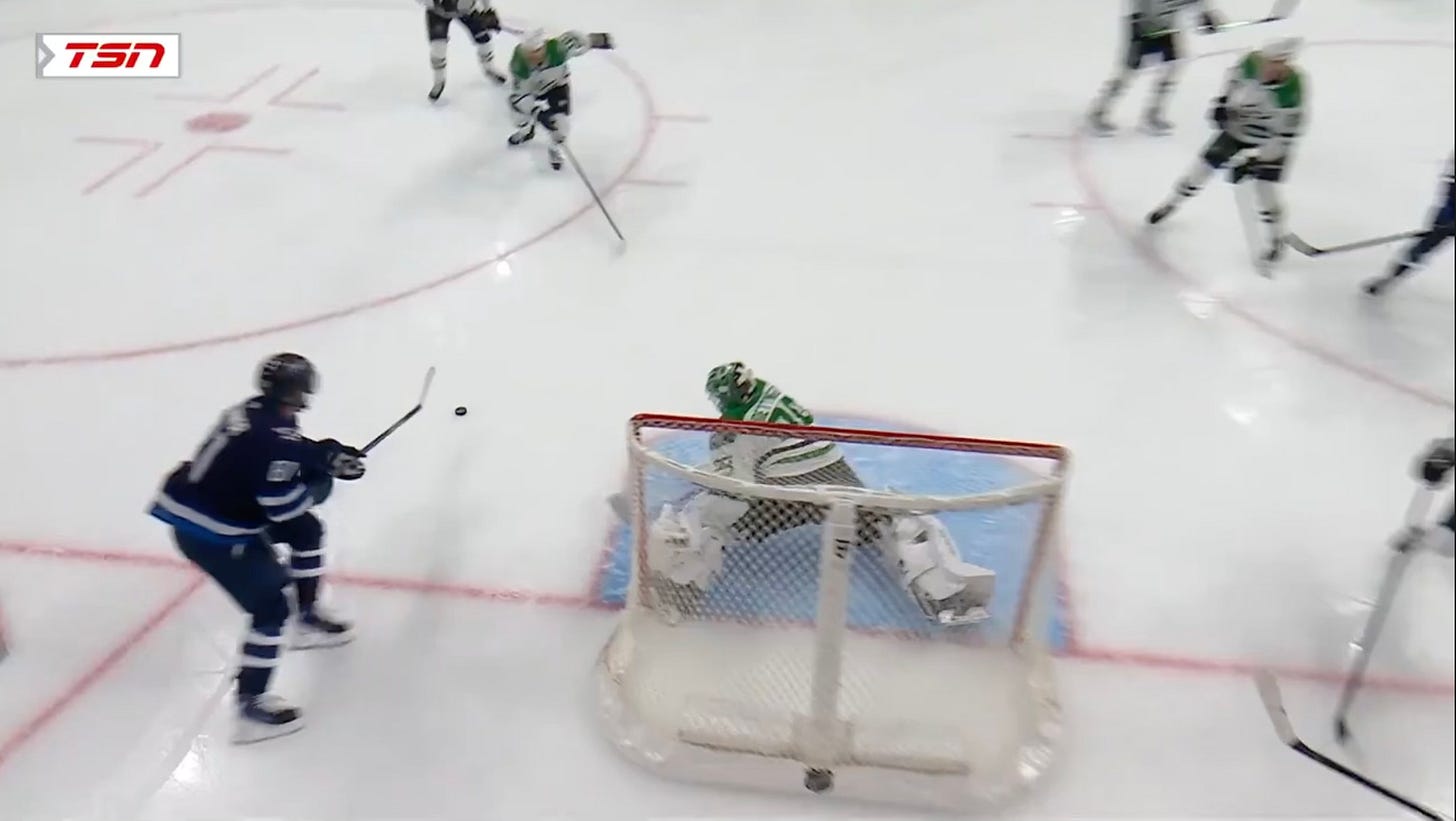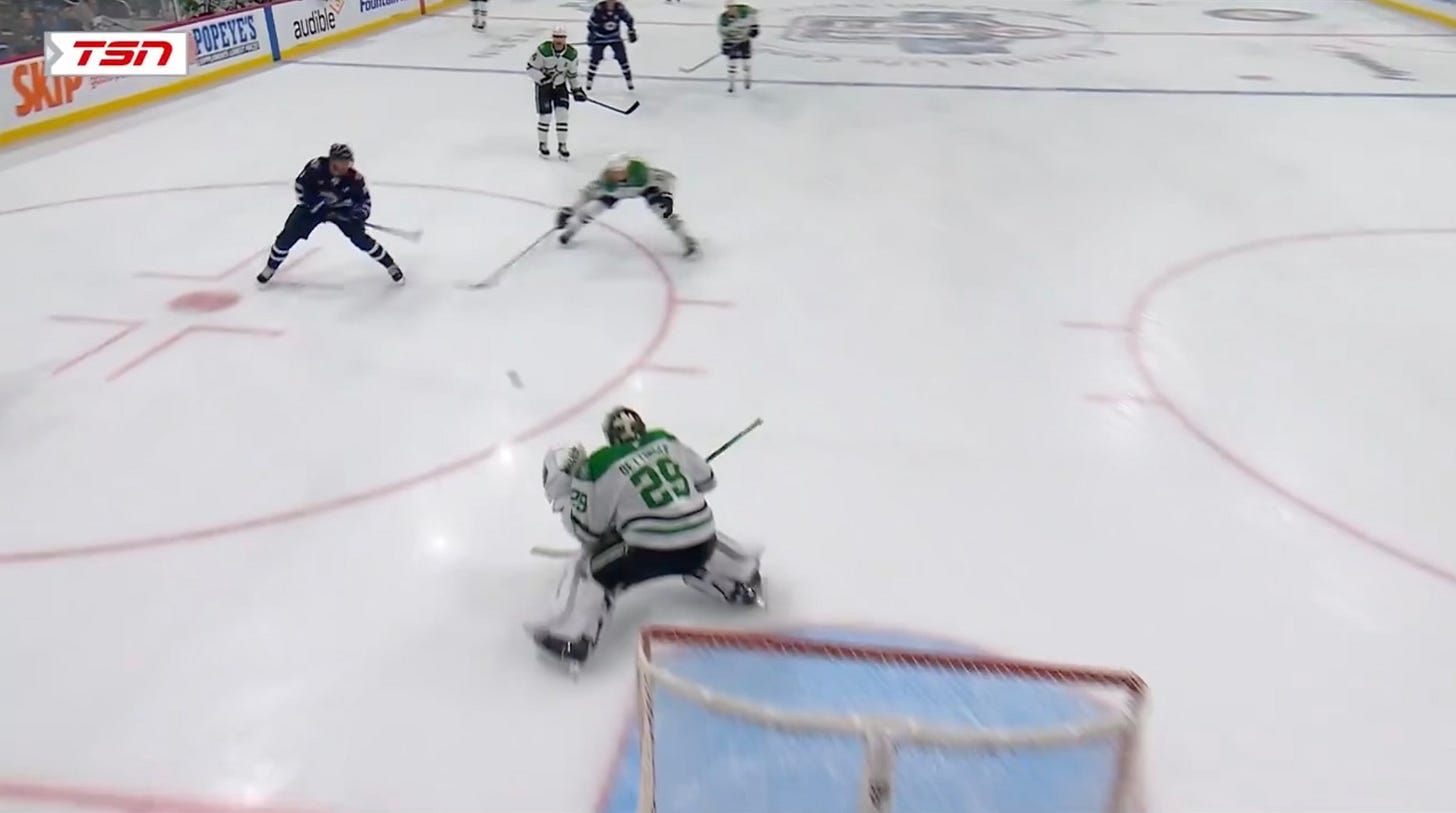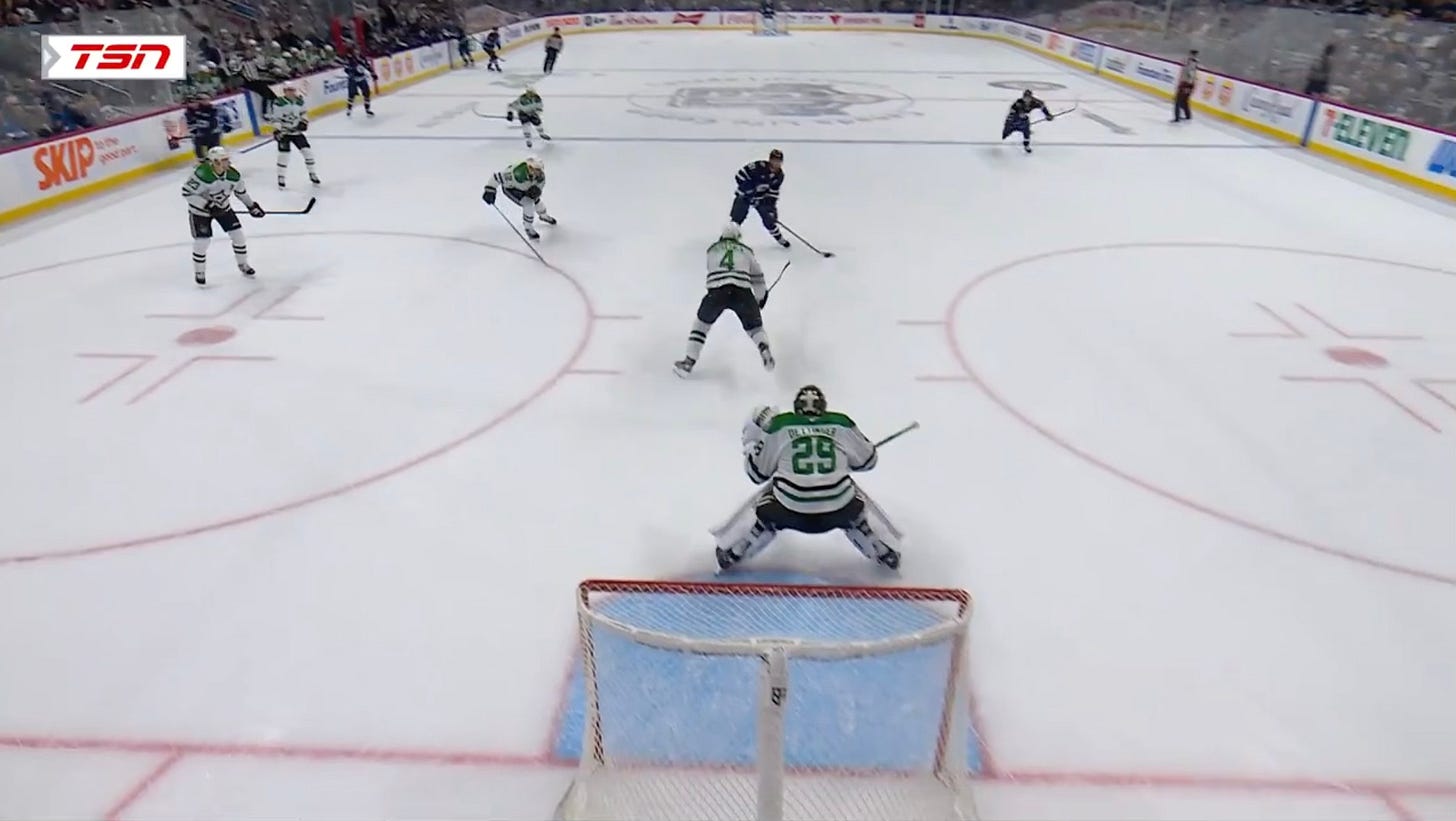On "things you can't teach," Kyle Connor, and offensive execution
Some thoughts from the Stars-Jets game last night.
Tuesday may have been official opening night for the NHL, but last night felt like the main course, the entree of the week, with 14 games on tap featuring 28 of the NHL’s 32 teams.
I was at the game between the Detroit Red Wings and Montreal Canadiens, which I wrote about here, before heading home and catching some of the late-night games from my couch.
If you only watch one highlight package, take three minutes to watch what happened between the Vegas Golden Knights and San Jose Sharks. You feel bad here for Alex Nedeljkovic, who put on a masterclass on how to lose a game as a goalie in the end.
The other game that caught my attention, and many of the readers of this site, was the Central Division tilt between the Dallas Stars and Winnipeg Jets. A playoff rematch from last season, the two teams that have a lot of questions to answer about being able to finish what they started the past couple seasons — Dallas in the Western Conference Final, Winnipeg in the playoffs in general.
And it was an objectively fun game by all accounts, the teams combined for nine goals, six of them in the third period, and you came away from the contest thinking that both the Jets and Stars somehow got incredible discounts on their biggest contracts in the past six months, Kyle Connor and Mikko Rantanen, respectively.
But I want to focus on something that stuck with me, that I heard on the Winnipeg broadcast, during my re-watch describing Matt Duchene’s spin-o-rama feed to Tyler Seguin that gave Dallas a 4-1 lead at the time.
“That’s something you just can’t teach.”
And when you think about it, there were lots of things in that Dallas-Winnipeg game that would probably fit under that category. The unteachable, inherent skill things that make the difference between a reliable depth forward and an elite point producer.
Connor’s performance, in particular, stuck with me.
Here is a screengrab of moment before each of Connor’s three goals.
That’s a bobbled puck, a weak-ish shot for a rebound, and a a goalie completely squared up, pretty close to perfectly. On all three Connor found the adjustment and adaptation to put the puck in the net.
The first goal, the bobbled puck, was a prime “poaching” moment, to steal a soccer team. While many players probably panic in that moment after the bobble, slamming the puck into Jake Oettinger’s pad, Connor is able to take the mili-second to adjust, let the puck come to him again and loft it in.
The second goal, the rush chance shot into the pads, is a prime example of finding a way to use a shot to create a second shot, forcing a save and understanding the area where it’s going to next.
Now I guess these are technically teachable things, but they have to be taught and learned long before a player reaches the NHL. An NHL coach, or any coach, with a whiteboard can tell a player anything they want, but it’s not going to instantly re-program a player to have the patience in those key moments.
It’s one of the things I’ve thought more about the past couple seasons, especially as I’ve become more involved with the scouting side over at Elite Prospects. There are lots of intangibles and natural skills that can define an elite NHL player, skating for example, but signs of natural offense instinct can often be the biggest difference between a player having the ability to figure it out as the progress from junior or the NCAA to the pro game.
Hope some of this makes sense, enjoy the games this weekend, and as always, thanks for reading.





That Duchene spin was a beauty and capped perfectly by Seguin.